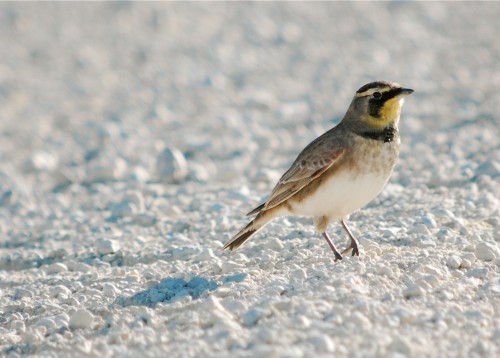 Horned larks a constant in my field work but it seems their numbers have bumped up recently. These birds are fairly common in farm field were I live, I hear them constantly. But I've been on bird trips where people have never seen one and they have been casually birding for a long time. Usually when you see them, they are flying away off the side of a gravel road as you speed past in your car. But since I am stationed on the side of the road for an hour at a time, I have occasion to see them up close.
Horned larks a constant in my field work but it seems their numbers have bumped up recently. These birds are fairly common in farm field were I live, I hear them constantly. But I've been on bird trips where people have never seen one and they have been casually birding for a long time. Usually when you see them, they are flying away off the side of a gravel road as you speed past in your car. But since I am stationed on the side of the road for an hour at a time, I have occasion to see them up close.
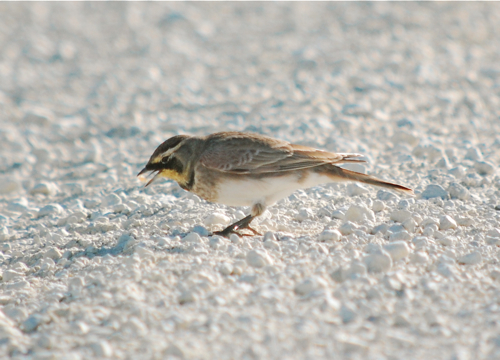
All the farmers are combining right now and migrating sparrows and larks are grabbing the seeds on the side of the road. As I watched this horned lark nibbling a crush corn kernel, I wondered why we don't see these birds scrounging around under bird feeders. Even if you use the argument that the habitat isn't right, what about all the newly developed houses in former farm fields...surely some adaptable horned larks were be scrounging under those at some point?

I love the moments my job affords me. Even when things are seeming slow, if I pay attention to what's going on around me, I can find something exciting. This morning, some horned larks were getting into a bit of a fight.
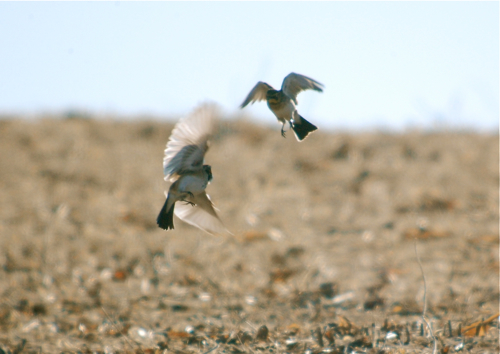
These horned larks kept flighting up against each other. I wondered how well this plays out in migration. Wouldn't it be more energy efficient not to fight and focus on where the birds need to travel to? Although a peck order must be established, I suppose.
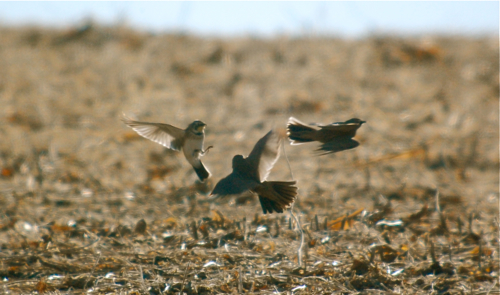
And once 2 are involved, everyone else needs to get a piece of the horned lark fight club action. Who needs to go on an African safari when wildlife fights can happen in a recently combined soybean field?


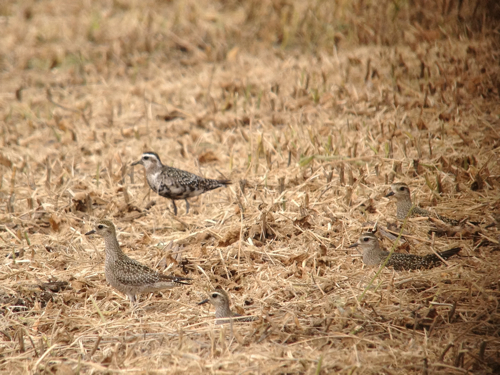
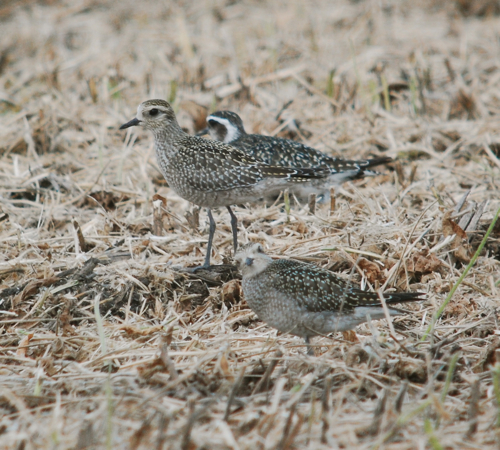

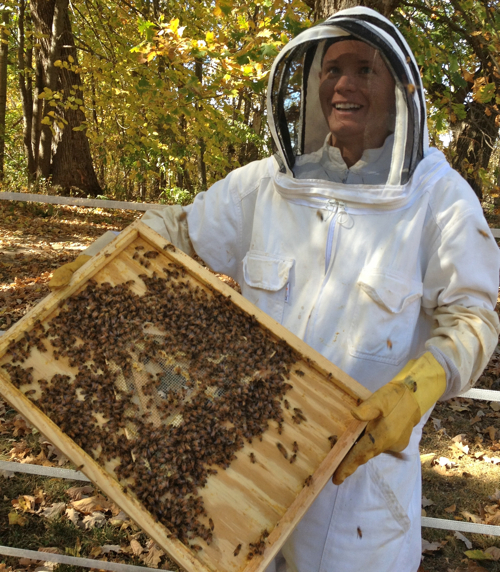



 As sparrow migration is blitzing around the US, I thought I put up these images of a white-throated sparrow chowing down on a snowy mountain ash. Even if you can't have bird feeders, sometimes having the right kind of trees can be very beneficial to migratory birds.
As sparrow migration is blitzing around the US, I thought I put up these images of a white-throated sparrow chowing down on a snowy mountain ash. Even if you can't have bird feeders, sometimes having the right kind of trees can be very beneficial to migratory birds.